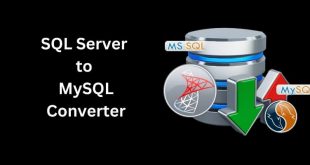Customer Relationship Management (CRM) software is currently used by businesses of all sizes. Indeed, 91% of businesses with over 11 employees use CRM software. Whether targeting niche markets or a broader audience, CRM can help you manage customer relationships and cultivate long-term trust. However, measuring CRM success does come with its own set of challenges.
In this article, we’ll look into Measuring CRM Success: key metrics and Key Performance Indicators you’ll need to evaluate your efforts effectively. From universally valuable to industry-specific ones you may find of use, we’ve got you covered.
Key Metrics for Measuring CRM Success
So, let us start with universally valuable and well-established key metrics. No matter your niche or industry, the following 4 are fundamental ones you simply can’t afford to neglect.
Customer Acquisition Cost (CAC)
One of the most crucial metrics for any business lies in Customer Acquisition Cost (CAC). As the name suggests, this metric measures the cost of acquiring a new customer over a specific period.
The CAC formula is fairly simple:
CAC = Total cost of sales and marketing / Number of new customers acquired
Understandably, the lower your CAC, the more cost-effective your efforts are. Your CAC can help inform how much of your budget should be allocated to customer acquisition, and it effectively measures your efforts’ efficiency. Thankfully, the best CRM software solutions lean heavily on CAC measurement.
However, you should not approach CAC in isolation. Higher Customer Lifetime Value (CLV) may justify higher CAC if your customers are profitable throughout your relationship.
Customer Lifetime Value (CLV)
On that note, CLV is equally vital. In fact, its relationship to CAC alone should warrant close attention. Even beyond it, CLV effectively measures the net profit of a customer throughout their relationship with your company.
The CLV formula is only slightly more complex:
CLV = Average Purchase Value × Purchase Frequency × Customer Lifespan
Of course, CLV is vital for measuring CRM success – and the higher your CLV, the better. A higher CLV indicates that your marketing efforts are paying off, encouraging bigger and more frequent purchases and keeping your customers faithful for longer. Still, depending on your desired rations, MoversTech CRM argues that lower CLVs may be fine if they match low CACs.
Customer Retention Rate (CRR)
Moreover, Customer Retention Rate (CRR) synergizes with the above metrics. On its own, CRR gauges the percentage of customers you retain over a specific period.
The CRR formula, too, isn’t particularly complex:
CRR = (Number of Customers at End of Period − Number of New Customers Acquired During Period / Number of Customers at Start of Period) × 100
Needless to say, then, CRR is an invaluable metric to keep in mind. It directly informs CLV, for one, as it affects the customer lifespan. In addition, it directly caters to CAC in one key way: customer acquisition costs are tremendously higher than retention costs. So, high CRR can keep your relationships profitable while loosening your acquisition focus.
Net Promoter Score (NPS)
Finally, regarding fundamentals, you’ve no doubt explored Net Promoter Score (NPS) before. This metric directly gauges customer loyalty and satisfaction.
NPS is measured rather differently in that it first requires a survey question like the following:
“On a scale of 0 to 10, how likely are you to recommend our product/service to a friend or colleague?”
Then, your responders need to be classified:
- 9-10: Promoters
- 7-8: Passives
- 0-6: Detractors
And finally comes the NPS formula:
NPS = Percentage of Promoters − Percentage of Detractors
On its own, NPS gauges customer relationship quality. When positive, it signifies positive word-of-mouth and strong customer advocacy. When negative, it outlines customer dissatisfaction you’ll likely need to address promptly. At the same time, NPS also informs CRR, CLV, and similar metrics; the happier your customers are, the more fruitful and long your relationship will be.
Industry-specific Metrics
That said, there are also ample industry-specific metrics you’ll have to keep in mind. These will depend on your industry itself, as well as its current state and challenges. In addition, which ones you’ll focus on more will depend on your own business’s position and goals.
Still, you should measure CRM success through such additional metrics as the following:
- Retail: Basket size and customer churn rate. A larger basket size informs Average Purchase Value, while churn rates can also inform CLVs. Retail businesses may also struggle with high cart abandonment rates, which such metrics might help address.
- Healthcare: Patient satisfaction scores and appointment adherence. Specifically, it is crucial in the healthcare industry because it acts as an NPS equivalent. Appointment adherence also helps ensure proper care and directly affects a healthcare professional’s or institution’s final revenue.
- Hospitality: Occupancy rate and repeat bookings. In the hospitality industry, occupancy rates dictate maximum profitability. Repeat bookings also directly inform CLV and CRR.
- Technology: Software adoption rate and customer referrals. Software adoption rate can effectively gauge product user-friendliness and fittingness for purpose. Customer referrals are also particularly valuable in the technology industry, as they produce more nagged and loyal customers.
- Manufacturing: Order fulfillment time and return merchandise authorization (RMA) rate. Both of these metrics can directly gauge customer satisfaction in the manufacturing industry. RMA can prove particularly useful, as measuring it can help reduce costs associated with returns and replacements.
These are, of course, just a sample; industry-specific metrics vary and change over time, depending on each industry’s circumstances. Still, keeping an eye on such metrics can only prove beneficial.
KPIs for Effective Evaluation
And finally, CRM success measurements must always hinge on universal KPIs. You can certainly dig into such KPIs depending on your industry, but the following should always be in your sights:
- Sales metrics. These should always include conversion rates, sales growth, and any others you deem valuable. These KPIs measure the efficiency of turning leads into customers and the overall increase in revenue over time.
- Customer service metrics. These should include response time and resolution rate alongside other KPIs of value. Such KPIs gauge how quickly and effectively issues are addressed, directly impacting customer satisfaction and loyalty.
- Marketing metrics. KPIs of this type should include lead conversion rate and campaign return on investment (ROI). These key metrics assess the effectiveness of marketing efforts in generating leads and the profitability of marketing campaigns.
- User engagement metrics. Such KPIs should include active users and churn rate, as well as ones like NPS. These provide insights into customer retention and interaction with the product or service. In turn, they reliably illustrate the health of the customer base and your relationships.
As you can see, none of these KPIs are standalone. They offer standalone value, by all means, but they’re particularly valuable in their synergy with other metrics. In combination, they can offer a comprehensive overview of your customer relationships and the effectiveness of your CRM efforts.
Conclusion: Measuring CRM Success
In summary, measuring CRM success is far from easy. It requires a keen eye on specific key metrics and KPIs and a thorough understanding of your base. It may also rely on industry-specific metrics, which can change over time or concern you differently.
Still, measuring the effectiveness of your strategies is always worth the effort. With such insights, you can pinpoint specific areas for improvement, fostering long-term trust with your customers. In turn, you can lower marketing and customer management costs, make relationships more profitable, and benefit your bottom line.
 Free Web Resources , psd, mockups, & web templates Best WordPress Themes & Best Html Templates
Free Web Resources , psd, mockups, & web templates Best WordPress Themes & Best Html Templates








